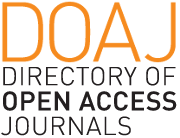Exploring the effectiveness of neural language models for identification and classification of lexical collocations
Abstract
The majority of research on automated collocation processing has focused on using association measures. However, the focus has been slowly shifting to exploring the effectiveness of neural language models (NLMs). In this paper, we investigate the latter by fine-tuning BERT family models in English, Spanish, and Portuguese using annotated lexical resources with Lexical Functions (LFs). We examine the capabilities of language models for the identification and classification of lexical collocation in both monolingual and multilingual scenarios. The results of the overall performances varied, with f1 scores ranging from 0.30 to 0.51. We conclude that the multilingual model excels in cross-lingual learning by employing a combined training set of all three languages. Moreover, despite possible variability, the results demonstrate improved identification of Lexical Functions with a larger number of instances in the training set. Lastly, we conduct a qualitative analysis to investigate possible patterns of misidentification exhibited by the model.
Copyright (c) 2024 Radovan Milovic

This work is licensed under a Creative Commons Attribution 4.0 International License.
Authors who publish with this journal agree to the following terms:
- Authors retain copyright and grant the journal right of first publication with the work simultaneously licensed under a Creative Commons Attribution License that allows others to share the work with an acknowledgement of the work's authorship and initial publication in this journal.
- Authors are able to enter into separate, additional contractual arrangements for the non-exclusive distribution of the journal's published version of the work (e.g., post it to an institutional repository or publish it in a book), with an acknowledgement of its initial publication in this journal.
- Authors are permitted and encouraged to post their work online (e.g., in institutional repositories or on their website) prior to and during the submission process, as it can lead to productive exchanges, as well as earlier and greater citation of published work (See The Effect of Open Access).













